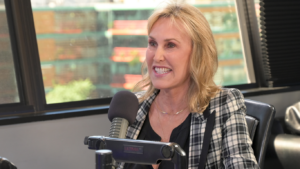In the realm of healthcare, diversity plays a pivotal role in providing effective and culturally competent services. Unfortunately, the American Medical Association’s Council on Medical Education reveals a stark reality — American Indians and Alaska Natives make up a mere 0.4% of the physician workforce. Recognizing this underrepresentation, it’s important to foster a more inclusive future in healthcare.
MORE NEWS: Ranking Arizona: Top 10 hospitals for 2024
The disparities in healthcare stem from a variety of barriers such as language, travel, technology, and cultural differences that make it difficult for Indigenous Americans to access the care they need. Travel to and from healthcare facilities can take anywhere from 30 minutes to two hours with specialty providers located even further. Scheduling these visits can take months to coordinate.
My uncle passed away under heartbreaking circumstances. He was flown down to a Phoenix hospital for treatment. Upon arrival, they faced a significant language barrier when attempting to explain the necessity of treatment in English. Unable to communicate effectively, the hospital staff had to contact his wife for translation. She conveyed that he needed to stay for additional tests. However, when hospital staff attempted to administer treatment, he declined once more, still struggling with the language barrier. While this was occurring, my uncle’s wife rushed to the hospital from the reservation without a cell phone (highlighting yet another technological accessibility barrier). Tragically, during her five-hour drive, he passed away. She was later informed that her husband died due to rejecting care from medical professionals. The entire ordeal underscores the complexities and challenges faced by Indigenous individuals dealing with the barriers they face in the healthcare system.
The scarcity of Indigenous healthcare professionals is a pressing concern, with far-reaching implications for both Indigenous communities and the wider healthcare industry. Culturally sensitive care can significantly impact health outcomes, making diversity in the workforce a crucial aspect of healthcare delivery. Patients lack trust when it comes to modern medicine, language barriers, diminished cultural understanding, and lack of acknowledgment of traditional and cultural practices are significant barriers to care. The introduction of an occupational exploration program is set to encourage local Native American students to pursue careers in the health field and return to the reservation to serve their people. It is believed that a Native student’s increased sense of community involvement enables them to better understand and be more invested in the health risks prevalent on the Reservation. In turn, this strong sense of community connection would make it possible for them to be more effective at combating these problems as healthcare providers in the future.
Students can access many levels of care offered by recovery centers’ including detox, residential services, partial hospitalization, intensive outpatient, and sober living environments, each of which has medical components that align with occupations in the healthcare industry. Students can expect to learn the distinction between medical facilities, hospitals, and clinics, immersing themselves in a behavioral health facility combining medical and clinical services. They can observe and identify health and wellness disparities to implement holistic, cultural care treating the human spirit.
The occupational exploration program established at Scottsdale Recovery Center not only aims to give Indigenous youth a platform to acquire knowledge and information but also to allow them to understand how to tie their cultural practices in the health and wellness space. This initiative encourages a sense of belonging and empowerment within the healthcare community.
Empowering Indigenous youth in healthcare is a crucial step towards building a more diverse and inclusive healthcare workforce. By breaking down barriers and providing tailored support, we can address the underrepresentation of Indigenous peoples in the physician workforce, ultimately contributing to better healthcare outcomes for Indigenous communities and fostering a more equitable future in the healthcare industry.
Author: Lee Yaiva is CEO of Scottsdale Recovery Center. Since 2009, Scottsdale Recovery Center serves the needs of people locally and nationwide searching for a successful solution to remove active alcohol, opioid, cocaine and other addictions to enjoy the benefits of living drug-free. With four facilities in the greater Phoenix – Scottsdale area, SRC continues to set the standard of Detox, Inpatient, Residential, Intensive Outpatient, and Sober Living services. Scottsdale Recovery Center is a trusted resource, locally and nationally, to the public, health care providers, and media outlets seeking knowledge to support their investigations and bring addiction industry awareness needed to save lives. Visit Scottsdale Recovery Center for more information or call 1-888-NODRUGS.




